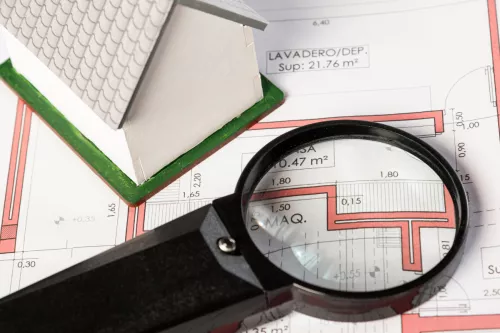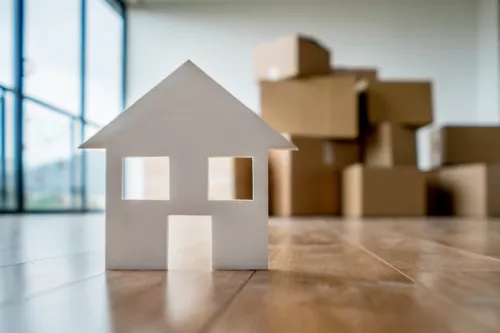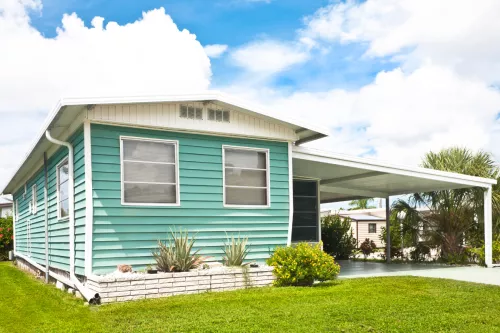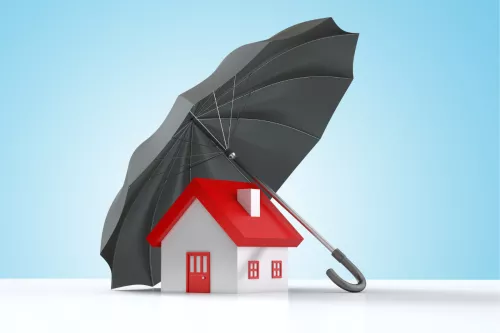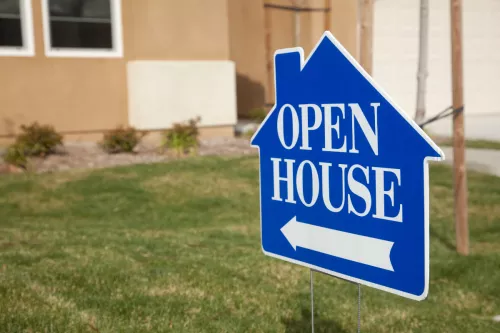In recent years, the tiny house movement has captured the imaginations of people worldwide, offering a minimalist, sustainable, and often more affordable way of living. But how does one effectively design and live in such a compact space?
If you want to know more about the nuances of tiny house interior design, keep reading. Here, we will discuss some common questions and provide practical advice for those curious about or committed to this unique lifestyle.
What is a tiny home?
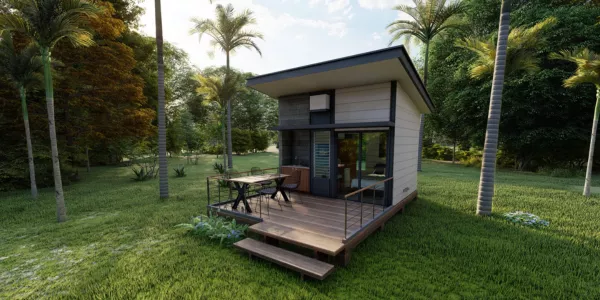
A home under 500 square feet is considered a tiny home, and it can go down to 100 square feet in some cases. For others, a tiny house is built on wheels and can be moved any time. This style of home embraces a multifunctional use of space, each and every area being utilized as best as it can.
A tiny house, although significantly more compact than a standard house, still manages to offer many of the amenities found in larger homes. This includes a full or queen-sized bed, a bathroom, a kitchen, and a living area, all designed on a considerably smaller scale.
How to Design the Interior of a Tiny Home?
Designing the interior of a tiny house is a creative challenge that requires both ingenuity and practicality. Here are some key tips:
The Importance of Paint Color
In small home interiors, light colors are popular for good reason. Neutrals like whites, grays, and beiges have the ability to reflect light, making spaces seem larger and more open than they actually are. Consider the patterns and color schemes of your furniture and upholstery when decorating your tiny house.
Maximize Space
Use multi-functional furniture, like a bed that turns into a sofa or a table that folds down from the wall. Optimize storage by using the vertical space - think wall shelves, and lofted beds with storage underneath. Even in a tiny space, personalizing your home with decor that reflects your style is crucial.
Incorporate Plants
Incorporating plants is essential in tiny house interiors. Utilize ceiling space to hang greenery, adorn walls with planters, or place succulents in areas that are often overlooked. These plants not only introduce vibrant colors but also purify the air, and they're perfect for starting an indoor herb garden.
Subtle Dividers
If you want to define different areas without using bulky partitions, consider using curtains, glass panels, or open shelving as room dividers. These options provide separation while maintaining an open, airy feel.
Lighting
Proper lighting is crucial. Utilize a mix of overhead, task, and ambient lighting to create a warm and inviting atmosphere. LED strips under cabinets or along stairs are both practical and aesthetically pleasing.
Personal Touches
Finally, personalize your space with items that reflect your personality – be it art, photos, or unique decor items. This helps to make your tiny home truly feel like your own.
What is the Largest Size a Tiny House Can Be?
The definition of a tiny house can vary, but generally, a tiny house is considered to be any residential structure under 500 square feet. However, this isn't a strict upper limit. Some tiny homes can be slightly larger, especially those designed for families, potentially reaching up to 600 square feet. The key is maintaining the spirit of minimalism and simplicity.
What is the Lifespan of a Tiny House?
Tiny homes have a lifespan ranging from 30 to 50 years. The lifespan of a tiny house depends largely on the materials used and the level of maintenance. A well-built tiny house, constructed with quality materials and maintained regularly, can last just as long as a traditional home. Regular maintenance is crucial, especially since tiny houses often face different stresses, such as those encountered in mobile versions.
Is Living Well in a Tiny Home Possible?
Yes, it is possible to live well in a tiny home! For some, adopting the minimalist style of life seems like a sacrifice, but opting for a tiny home doesn't equate to a diminished quality of life. In fact, residing in a well-organized, compact space often leads to reduced clutter, enhanced organization, a more sustainable lifestyle, and a closer-knit family environment.
Downsizing to a tiny home allows you to discard unnecessary belongings that you've accumulated over time, offering a highly efficient living area at a fraction of the cost of a traditional house.
Are tiny houses eco friendly?
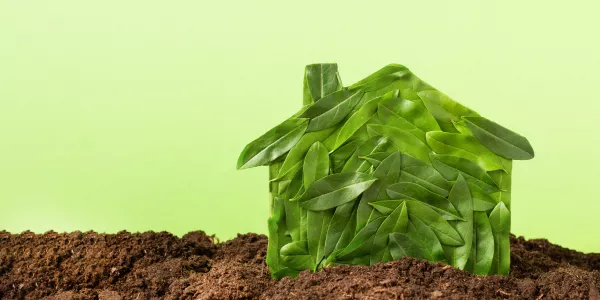
Tiny houses are often mentioned as eco-friendly. They require fewer building materials, leading to a reduced environmental impact from resource extraction and processing. The small size of these homes typically results in lower energy usage for heating and cooling, and the home is mobile, you can opt to move to shade in summer months and look for sunnier spots in cold periods.
Many tiny house enthusiasts opt for sustainable, recycled, or locally sourced materials, and the limited space encourages a minimalist lifestyle, which reduces consumption and waste.
Equipping these homes with renewable energy sources like solar panels further enhances their eco-friendliness. But, at the end of the day, the actual environmental impact of a tiny house depends on the materials used, energy sources, and the lifestyle of the occupants.
Three tiny home design ideas
Rustic design tiny home
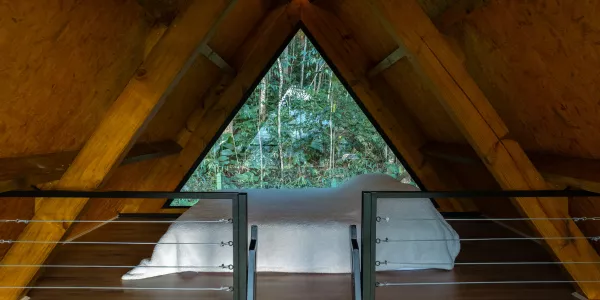
A rustic style tiny home combines the charm and warmth of traditional rustic design with the minimalist and efficient aspects of tiny living. It usually features the use of natural, often reclaimed materials like wood, stone, and metal. Exposed wooden beams, hardwood floors, and wooden wall paneling are common.
Classic tiny house design
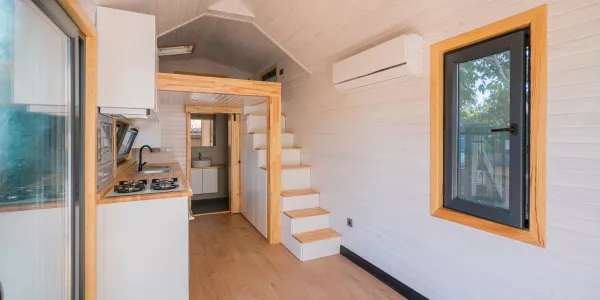
A classic tiny house design is about creating a small but smartly designed space that is both functional and charming, often reflecting traditional home aesthetics on a much smaller scale. The design focuses on necessity and practicality, avoiding excessive ornamentation or complex architectural features.
Tiny home Bohemia style
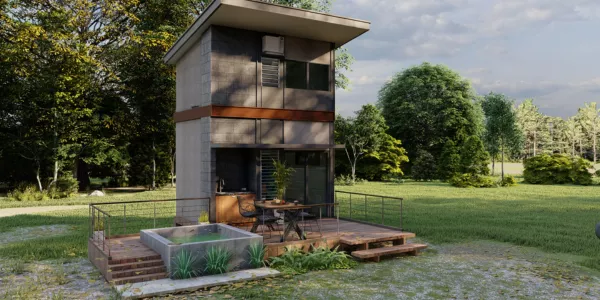
The Boho ( Bohemia) style in tiny houses is more than just an aesthetic; it's a reflection of a lifestyle that values creativity, personal expression, and a connection to the natural and cultural world. Incorporating natural elements like wood, rattan, and plants is essential. These elements bring a sense of earthiness and life to the small space.
Are there any restrictions when owning a tiny home?
One significant drawback of tiny home ownership involves navigating local government regulations. Numerous municipalities enforce stringent rules regarding the minimum dimensions for new permanent structures. Also, finding a suitable location to place a tiny home can be a challenge. Some areas have restrictions on building secondary dwellings on a property, or sometimes don’t allow single dwellings on vacant land.
Is also good to consider that securing financing for a tiny home can be difficult, as many lenders do not offer traditional mortgage options for tiny houses. Similarly, finding insurance for a tiny home can be more complicated than for a conventional home.
People also ask
Are tiny homes suitable for all ages?
Yes, tiny homes suitable for all ages, from young adults to seniors. But their appropriateness depends on individual needs, lifestyle preferences, and physical abilities. As always, there are also some considerations. For a family with children for example, living in a tiny home can be challenging due to space limitations.
The same thing is relevant for people with disabilities. Accessibility can be a significant challenge in tiny homes, especially those with lofts or compact layouts. Custom designs that cater to specific needs are essential for making tiny homes viable for individuals.
How do I deal with waste and sewage in a tiny house?
There are a variety of strategies for dealing with waste and sewage. Composting toilets are a favored choice, converting human waste into compostable material, which is ideal for stationary and off-grid setups. Incinerating toilets, which burn waste into ash, offer an alternative that requires electricity or gas.
For more mobile tiny homes, there are RV-style black water tanks, where waste is stored and later conveniently emptied at designated stations. Greywater systems allow the reuse of water from sinks and showers for irrigation, though this requires proper filtration and adherence to local regulations.
Each method comes with its own set of considerations, emphasizing the importance of aligning with local environmental and health regulations.
Can I live in a tiny house with a family?
Yes, but it requires careful planning to ensure adequate space for everyone. Creative design solutions are necessary for privacy and to accommodate the changing needs of growing children.
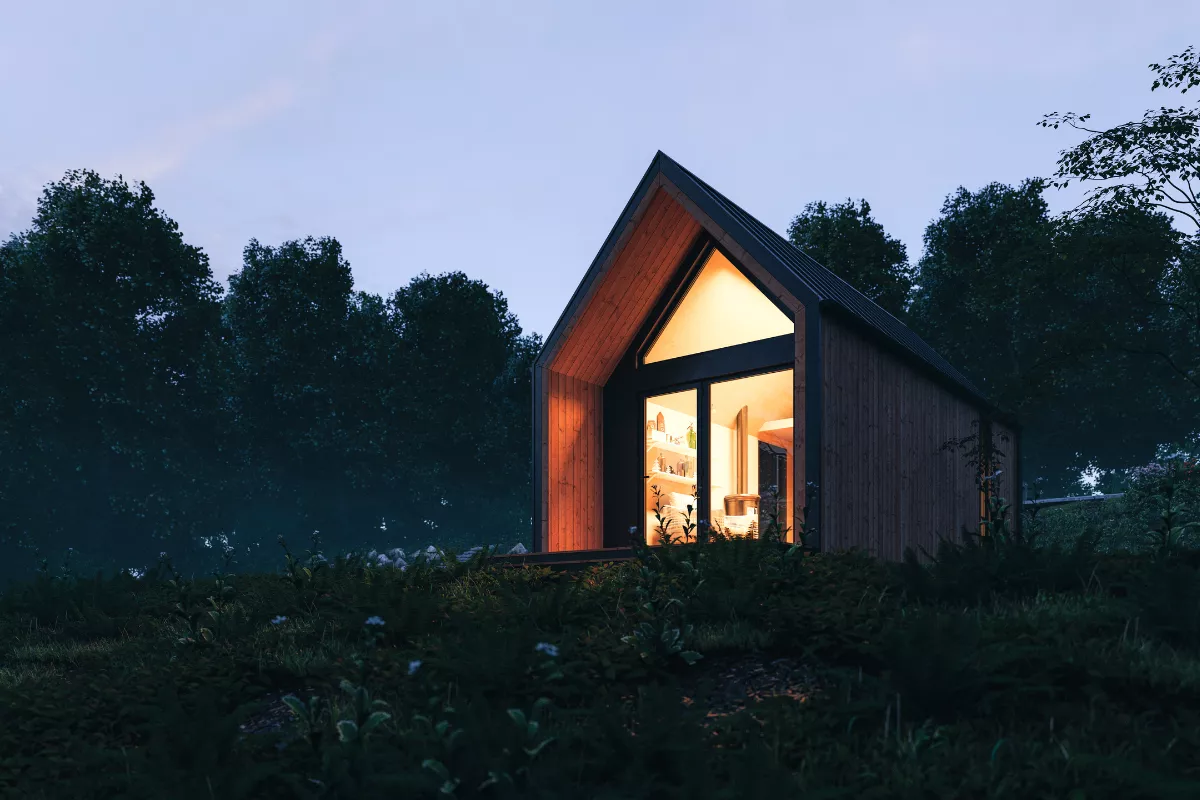
 Marcio Vasconcelos
Marcio Vasconcelos
